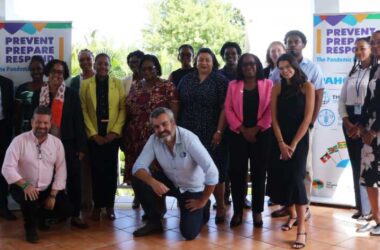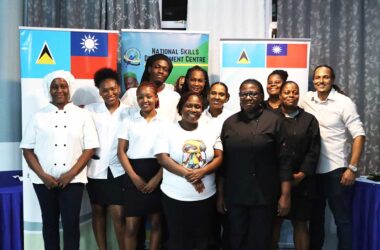FOR three years, Japan and Saint Lucia have been teaming up to conduct skills and knowledge exchanges in fisheries through the Fisheries University student volunteer project.
This year’s batch of university student volunteers has been dispatched for the next round of collaboration between universities in Japan and the Saint Lucia Department of Fisheries, Ministry of Agriculture, Fisheries, Physical Planning, Natural Resources and Cooperatives and the Saint Lucia National Trust (SLNT).
The volunteers are graduates and undergraduates of subjects in Fisheries, Marine Biology and Environmental Studies at the Hokkaido University and Tokyo University of Marine Science and Technology (July group) and the Kagoshima University (August group). These Japanese universities partnered with the Department of Fisheries in Saint Lucia to assist with several fisheries and environmental projects.
Each group of students spends only a few weeks in Saint Lucia at a time, but they do manage to complete the projects and, in cases of research intensive courses, they continue where the previous group stopped.
This July, student volunteers will assist in the goal of utilizing seaweed and seaweed products more effectively by gathering and testing samples of mineral-rich seaweed salt (MOSHIO) and to establish manufacturing methods for the above.
They will also investigate coastal organisms and those that dwell among the seaweed for research purposes. Their findings and work will be used to enrich the National Trust (South) exhibition and at the Mankote Mangrove. Workshops will be held by them for the public.
The August group will target the north of the island, specifically to promote a fish-rich diet by volunteering cooking workshops and promoting the idea at Gros Islet Friday Night. They will also help the environment with clean-up activities in Gros Islet and workshops that will address the problem of garbage.
The previous volunteers conducted studies on species of seaweed around Sandy Beach and investigated uses of seaweed in nutrition as well as how to use little-used but still edible fish species in different ways.













![Lisa Hunt - Chief Nutritionist [Photo credit : MOA]](https://thevoiceslu.com/wp-content/uploads/2025/12/Lisa-Hunt-Chief-Nutritionist-feat-380x250.jpg)

